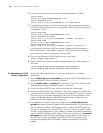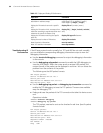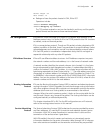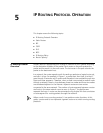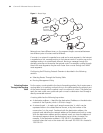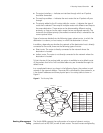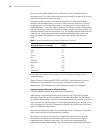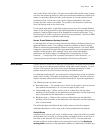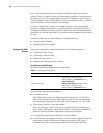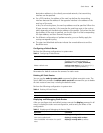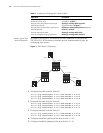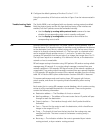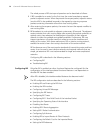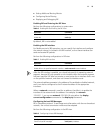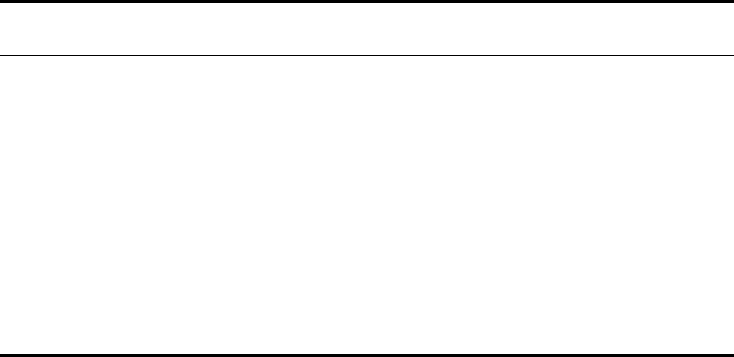
66 CHAPTER 5: IP ROUTING PROTOCOL OPERATION
the user are managed together with the dynamic routes as detected by the
routing protocol. The static routes and the routes learned or configured by routing
protocols can be shared with each other.
Routing protocols (as well as the static configuration) can generate different
routes to the same destination, but not all these routes are optimal. In fact, at a
certain moment, only one routing protocol can determine a current route to a
single destination. Thus, each routing protocol (including the static configuration)
has a set preference, and when there are multiple routing information sources, the
route discovered by the routing protocol with the highest preference becomes the
current route. Routing protocols and the default preferences (the smaller the
value, the higher the preference) of the routes that they learn are shown in
Table 1.
In the table, 0 indicates a direct route, and 255 indicates any route from an
unreliable source.
Except for direct routing and BGP (IBGP and EBGP), the preferences of various
dynamic routing protocols can be manually configured to meet the user
requirements. The preferences for individual static routes can be different.
Supporting Load Sharing and Route Backup
The Switch 8800 supports load sharing and route backup.
Load sharing is supported by configuring multiple routes that reach the same
destination and use the same precedence. The same destination can be reached
by multiple different paths, whose precedences are equal. When there is no route
that can reach the same destination with a higher precedence, the multiple routes
will be adopted by IP, which will forward the packets to the destination by these
paths to implement load sharing.
Route backup allows the system to automatically switch to a backup route when
main route has failed to improve network reliability.
To achieve route backup, the user can configure multiple routes to the same
destination according to actual situation. One of the routes has the highest
precedence and is called as main route. The other routes have descending
precedence and are called backup routes. Normally, the router sends data by the
Table 1 Routing Protocols and the Default Preferences for Routes
Routing protocol or route type
The preference of the corresponding
route
DIRECT 0
OSPF 10
ISIS 15
STATIC 60
RIP 100
OSPF ASE 150
OSPF NSSA 150
IBGP 256
EBGP 256
UNKNOWN 255



